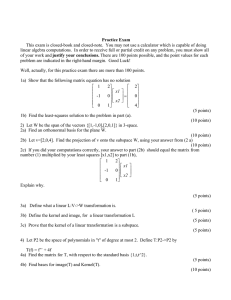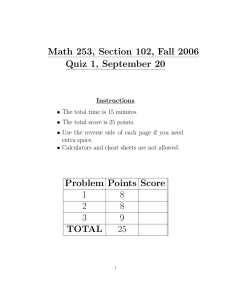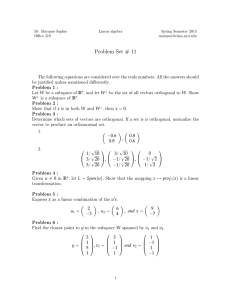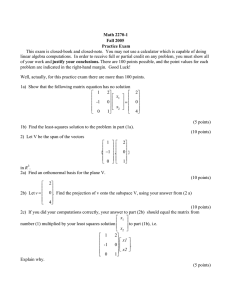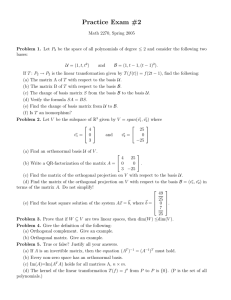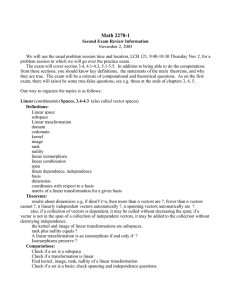Math 2270−3
advertisement
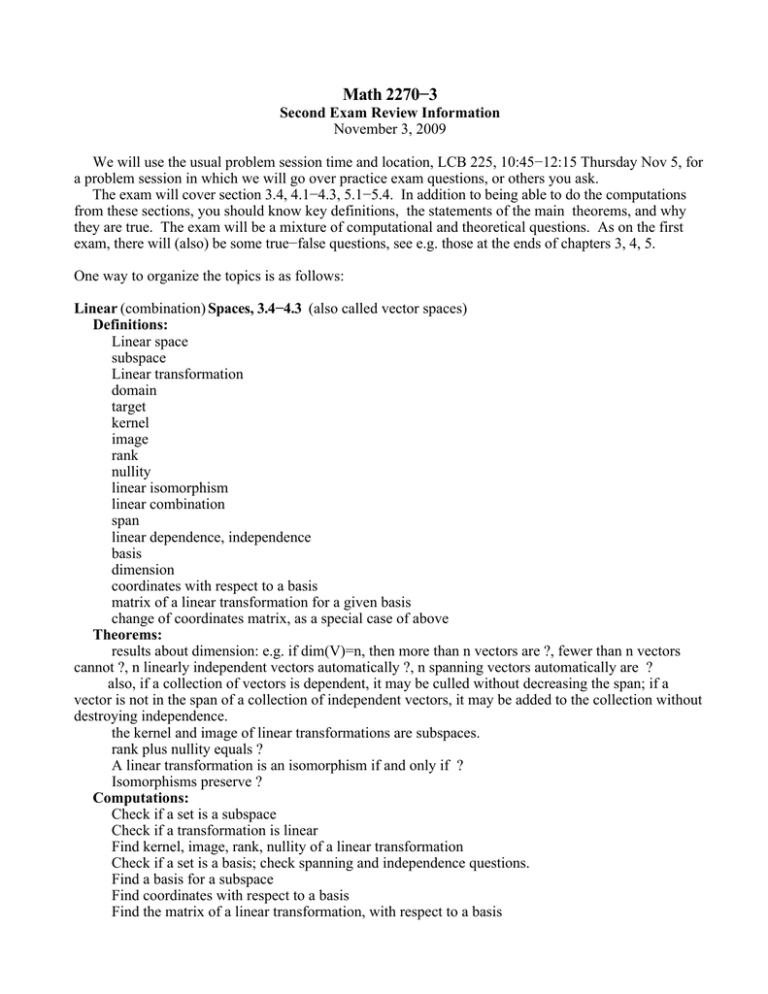
Math 2270−3 Second Exam Review Information November 3, 2009 We will use the usual problem session time and location, LCB 225, 10:45−12:15 Thursday Nov 5, for a problem session in which we will go over practice exam questions, or others you ask. The exam will cover section 3.4, 4.1−4.3, 5.1−5.4. In addition to being able to do the computations from these sections, you should know key definitions, the statements of the main theorems, and why they are true. The exam will be a mixture of computational and theoretical questions. As on the first exam, there will (also) be some true−false questions, see e.g. those at the ends of chapters 3, 4, 5. One way to organize the topics is as follows: Linear (combination) Spaces, 3.4−4.3 (also called vector spaces) Definitions: Linear space subspace Linear transformation domain target kernel image rank nullity linear isomorphism linear combination span linear dependence, independence basis dimension coordinates with respect to a basis matrix of a linear transformation for a given basis change of coordinates matrix, as a special case of above Theorems: results about dimension: e.g. if dim(V)=n, then more than n vectors are ?, fewer than n vectors cannot ?, n linearly independent vectors automatically ?, n spanning vectors automatically are ? also, if a collection of vectors is dependent, it may be culled without decreasing the span; if a vector is not in the span of a collection of independent vectors, it may be added to the collection without destroying independence. the kernel and image of linear transformations are subspaces. rank plus nullity equals ? A linear transformation is an isomorphism if and only if ? Isomorphisms preserve ? Computations: Check if a set is a subspace Check if a transformation is linear Find kernel, image, rank, nullity of a linear transformation Check if a set is a basis; check spanning and independence questions. Find a basis for a subspace Find coordinates with respect to a basis Find the matrix of a linear transformation, with respect to a basis Use the matrix of a linear transformation to understand kernel, image Compute how the matrix of a linear trans changes if you change bases Orthogonality (Chapter 5) Definitions: dot product in Rn orthogonal magnitude unit vector orthonormal collection orthogonal complement to a subspace orthogonal projection angle orthogonal transformation, orthogonal matrix transpose symmetric and antisymmetric matrices least squares solutions to Ax=b inner product spaces generalization (not on this exam, but maybe on final) Theorems dot product algebra Pythagorean Theorem Cauchy−Schwarz Inequality Any basis can be replaced with an orthnormal basis (Gram Schmidt) Algebra of the transpose operation algebra of orthogonal matrices Orthogonal complement geometry/algebra Computations coordinates when you have an orthonormal basis (in any inner product space) Gram−Schmidt (works in any inner product space) A=QR decomposition orthogonal projections (works in any inner product space) least squares solutions application to best−line fit for data, or best polynomial fit, or power law fit matrix for orthogonal projection
